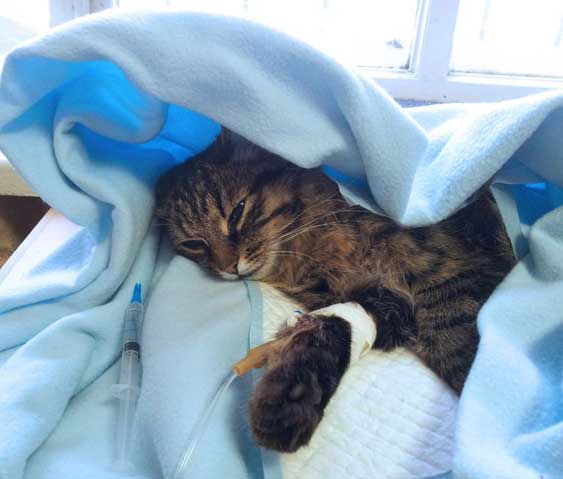
One of the most heartbreaking diagnoses a pet owner can hear is that a beloved family pet has been stricken with a terminal illness. Like humans, cats and dogs can fall victim to cancerous tumors that can quickly be fatal. Luckily, if the disease is caught early enough, there are excellent treatments available for pets of all sizes. Read on to learn more about the most common types of cancer found in pets and the telltale symptoms.
Lymphoma
Lymphoma affects both feline and canine animals. This form of the disease consists of cancerous tumors that affect virtually any body organ. Because lymph nodes are present throughout the body, the cancerous cells may grow in a way that is difficult to detect. Signs of Lymphoma include lack of appetite, increased lethargy, weight loss, vomiting, and diarrhea. Should a pet suddenly fall ill, the owner should track the amount of time it takes to recover. An animal that stays ill for longer than one week should be seen by a veterinarian.
Osteosarcoma
Osteosarcoma is a growth of cancerous cells in the animal’s bones. A cat is most often affected by this disease in the shoulders and legs, though it can appear anywhere. A dog is often affected in the legs as well, though osteosarcoma is more common in larger breeds than in smaller pets. Animals that begin favoring their legs or limping may be affected by a tumor. Other signs of bone cancer are unexplained swelling, inability to walk and sometimes bloody nose or excessive sneezing.
Breast Cancer
Older animals may develop tumors in their mammary glands. Many of these tumors are benign. However, it is always advised to have even benign tumors removed. This type of disease is most often found in female pets over six years old who have not been spayed. It is also prevalent in animals who were spayed later in life. Symptoms present similarly to those in humans. Lumps, soreness, and unexpected secretions are all cause for alarm.
Malignant Melanoma, Squamous Cell Carcinoma, and Mast Cell Tumors
Sunblock is not commonly used on pets. This is unfortunate because, just like their owners, these pets can develop cancerous cells on their skin. Symptoms are generally limited to growths and changes in skin appearance, especially on those areas that are not covered by hair. Though many growths are not malignant, it is very important to have any change in skin appearance examined by a veterinarian. If caught early, pets have an excellent chance of survival.
Hemangiosarcoma

Hemangiosarcoma almost exclusively affects dogs, though it can rarely appear in cats. This disease affects the lining of blood cells. Signs of hemangiosarcoma include abdominal swelling, weakness, lethargy, nosebleeds and lack of appetite. Unfortunately, it is possible for none of these signs to appear. Many pet owners do not worry about their pets’ health until the animal collapses from an internal hemorrhage.
Treatment
Treatments vary depending on the extent and type of disease. In most cases, veterinarians will attempt to remove any tumors through surgery. Pets may be offered chemotherapy or radiation treatments to kill the cancerous cells. Pets that are in advanced stages of the disease may be offered treatments to ease the pain, but they are unlikely to recover to full health. Many pet owners are faced with the sad choice to extend the pet’s life or to euthanize in order to relieve suffering. A veterinarian is able to offer expert opinions, but it is always up to the pet owner to decide.
Prevention
Pet health starts with regular checkups, healthy diet, and exercise. Animals that are obese may have a higher risk of developing a disease. The same is true for those who have diets that are high in fat. To observe the best in pet health, owners should take the same precautions with the pets that live in their homes as they do with themselves.





















